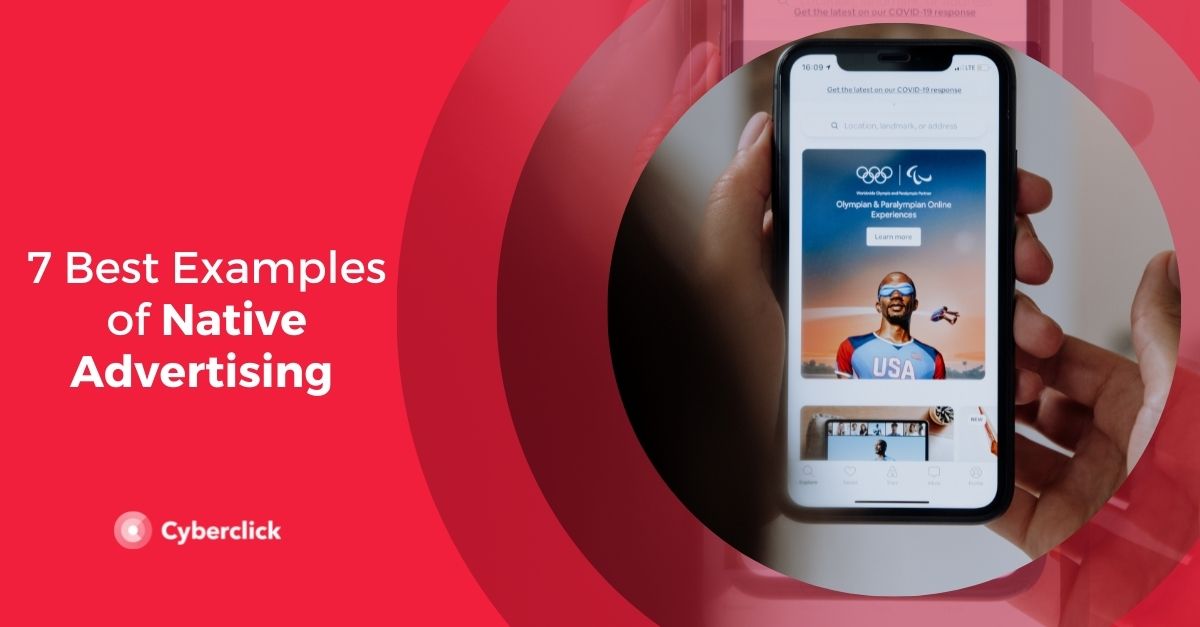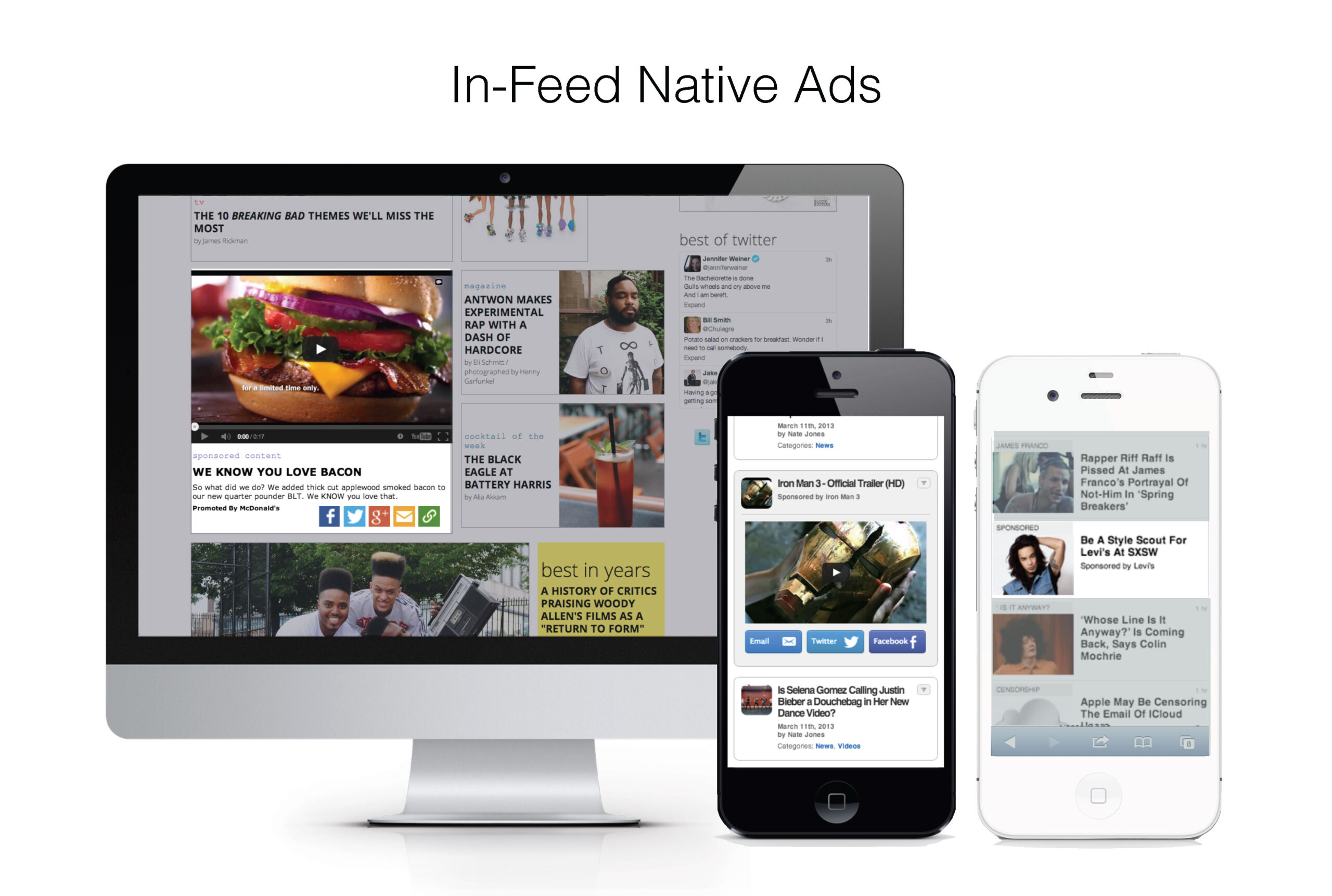What are native ads? They’re a form of advertising that feels more natural to the user than traditional display ads. Native ads match the look, feel and function of the content around them, making them less intrusive and more engaging.
Studies have shown that people are more likely to pay attention to native ads than banner ads, and they’re also more likely to remember them afterwards.
Native advertising is a form of online advertising that is designed to blend in with the surrounding content on a website. Unlike traditional banner ads, native ads are less intrusive and more likely to be clicked on by users. Native ads can take many different forms, but they all have one thing in common: they are designed to look like the content around them.
For example, a native ad for a new pair of shoes might appear as a blog post about the best places to buy shoes online. Or, an ad for a new car might appear as a list of the top 10 cars for families. Native ads are becoming increasingly popular with both advertisers and consumers.
Advertisers love native ads because they are more effective than traditional banner ads at getting people to click through to their website or product. And consumers love native ads because they are less interruptive and more relevant to their interests.
What Is Native Advertising?
What is Meant by Native Ad?
A native ad is an advertisement that is designed to look and feel like a piece of content from the publisher’s website. It blends in with the other content on the page, making it more difficult for users to distinguish between ads and editorial content. Native advertising can take many different forms, including in-feed ads, recommendation widgets, and promoted listings.
In each case, the aim is to make the ad look as similar as possible to the surrounding content so that users are more likely to engage with it. The key difference between native advertising and other forms of online advertising is that native ads are less intrusive and therefore more effective at getting users’ attention. This makes them an attractive option for both advertisers and publishers.
However, not all native ads are created equal. Some types of native advertising (such as in-feed ads) can be very effective at driving conversions, while others (such as promoted listings) may be less so. It’s important to choose the right type of native ad for your goals.
What are Native Ads Example?
Native advertising is a form of online advertising that matches the form and function of the platform on which it appears. For example, an advertisement in a social media feed might look like a post from a friend, while an ad on a search engine results page might look like one of the results. The key to successful native advertising is making sure that the ad is both relevant to the audience and consistent with the overall tone of the site.
For example, ads on a news site should be informative and objective, while ads on a entertainment site can be more lighthearted and fun. There are many different types of native advertising, but some common examples include sponsored posts, in-feed ads, and search engine result page ads.
What is Native Ads in Google?
Google’s native ads are a type of advertising that blends in with the content on a website or app. The ad is designed to look like a normal part of the page, and it can be customized to match the look and feel of the site or app where it appears. Native ads can include text, images, videos, and other types of content, and they can be interactive.
Native ads can be effective because they’re less intrusive than other types of advertising, and they can be targeted to specific audiences. For example, if you’re running a native ad on a website about cooking, your ad could be targeted to people who have previously visited cooking-related websites. If you’re interested in using native ads on Google, there are a few things you should keep in mind.
First, make sure that your ad is relevant to the content on the site or app where it will appear. If your ad isn’t relevant, it will stick out like a sore thumb and people will likely ignore it. Second, don’t make your ad too intrusive or disruptive.
Remember that people are there to consume the content on the site or app, not to see your ad. If your ad is too disruptive, people will either leave the site or block your ad from appearing again. Finally, make sure that your native ad is well-designed and looks like it belongs on the site or app where it will appear.
What is Native And Non Native Ads?
There are two types of ads that you will commonly find online: native ads and non-native ads. So, what is the difference between the two? Native Ads
Native ads are designed to blend in with the content on the page. They match the look and feel of the site they are appearing on and so can appear more natural to users. Native ads can be less intrusive than other types of advertising as they don’t stand out from the rest of the content.
Non-Native Ads Non-native ads, on the other hand, are not designed to fit in with the surrounding content. They may have a different style or format which makes them stand out from everything else on the page.
Because of this, they can be more intrusive and so may put some users off.

Credit: www.cyberclick.net
Native Ads Example
What are Native Ads? Native ads are a form of advertising that blends in with the content on the page. They can take many different forms, but they all have one thing in common: they don’t look like traditional banner ads.
Why Use Native Ads? Native ads are effective because they don’t interrupt the user’s experience. They’re less intrusive than other forms of advertising, and they can be more relevant to the user because they’re based on the context of the page.
How to Use Native Ads There are a few things to keep in mind when using native ads. First, make sure the ad is relevant to the page it’s appearing on.
The ad should also be clearly labeled as an advertisement. Finally, don’t overload your pages with too many native ads; one or two is usually enough.
Native Ads Vs Display Ads
As a marketer, you have many options when it comes to choosing which type of advertising to use. Two of the most common types are native ads and display ads. Both have their own advantages and disadvantages, so it’s important to understand the difference between them before making a decision.
Native Ads: Native ads are advertisements that blend in with the surrounding content. They match the look and feel of the site or app where they’re being displayed, making them less intrusive than other types of ads.
Native ads also tend to be more effective because they’re more relevant to the user’s interests. However, native ads can be more expensive than other types of advertising, and they may not be available on all platforms. Additionally, users may be able to block or ignore native ads if they don’t find them useful.
Display Ads: Display ads are advertisements that appear as banner images or text boxes on websites or apps. They’re usually less expensive than native ads, but they can also be less effective because they’re less relevant to the user’s interests.
Additionally, users may find display ads to be annoying and intrusive.
Google Native Ads Example
Google Native Ads are a new type of ad that allows you to blend your ad into the content of your website, making it more seamless and less intrusive for users. Here’s an example of how a Google Native Ad might look on a website: As you can see, the ad is integrated into the content of the page, making it less likely to disrupt the user experience.
Google Native Ads are currently available in limited beta, but we expect them to roll out more broadly in the near future.
Is Native Advertising Considered Marketing
Yes, native advertising is considered marketing. It is a form of marketing that involves creating content that is designed to blend in with the surrounding editorial content on a website. This content is often labeled as “sponsored” or “promoted” so that readers know it is not editorially independent.
Native advertising can be an effective way to reach potential customers who are already engaged in reading the type of content that surrounds your ad. Because native ads are less intrusive than traditional banner ads, they can also improve the user experience on a website. However, some people argue thatnative advertising is deceptive because it does not clearly label itself as an advertisement.
Others argue that native ads are simply another way for companies to get their message in front of potential customers and should be evaluated based on their effectiveness, just like any other marketing strategy.
How to Write a Native Ad
A native ad is a paid advertisement that is designed to blend in with the surrounding content on a page. Unlike traditional banner ads, native ads do not interrupt the user’s experience and are therefore more effective at driving clicks and conversions. To write a native ad, start by determining your goals and target audience.
Then, create compelling copy that speaks to your readers and provides value. Be sure to include a strong call-to-action so that readers know what you want them to do next. Finally, design your ad to match the look and feel of the site or app where it will be displayed.
When done correctly, native advertising can be an extremely effective way to reach your target audience and achieve your marketing goals. Keep these tips in mind when creating your next native ad campaign!
What is Native Advertising Quizlet
What is Native Advertising Quizlet? If you’re like most people, you probably think of advertising as something that’s intrusive and interruptive. You know, those annoying ads that pop up in the middle of your favorite TV show or web article.
But there’s a new type of advertising called “native advertising” that’s becoming increasingly popular with brands and consumers alike. Unlike traditional advertising, native advertising doesn’t interrupt or disrupt the user experience. Instead, it blends in seamlessly with the surrounding content.
For example, a native ad on a news website might look like an ordinary article, but it would be clearly labeled as an advertisement. Native advertising is effective because it doesn’t feel like marketing to consumers. It feels like valuable content that they actually want to consume.
And since native ads are less disruptive than traditional ads, they’re more likely to get noticed and generate leads for businesses. If you’re thinking about using native advertising to promote your business, there are a few things you should keep in mind. First, make sure the platform you’re using offers high-quality placements for your ad.
Second, create compelling copy and visuals that will grab attention and encourage users to click through to your website or landing page. Finally, don’t forget to track your results so you can measure the effectiveness of your campaign!
Native Advertising Cpm
What is Native Advertising Cpm? Native advertising Cpm is a type of online advertising that blends in with the surrounding content on a website or app. It’s designed to look and feel like natural, organic content, rather than an intrusive ad.
Why is Native Advertising Cpm effective? Native advertising Cpm is effective because it’s less interruptive than other forms of online advertising, such as banner ads. Because native ads blend in with the surrounding content, they are more likely to be seen and interacted with by users.
This results in higher engagement rates and click-through rates, which can ultimately lead to more conversions. How can I use Native Advertising Cpm?
Taboola
Taboola is a content discovery and native advertising platform that helps publishers monetize their site traffic. It does this by recommending related content to users as they browse the web, and by placing native ads on publisher sites. Taboola was founded in 2007, and is headquartered in New York City.
Conclusion
Native advertising is a form of online marketing that emerged in the early 2010s. It is a type of advertising that matches the form and function of the platform on which it appears. For example, an advertisement on a social media platform would look like a post from a friend or follower, while an ad on a news website would look like an article from the publication.



